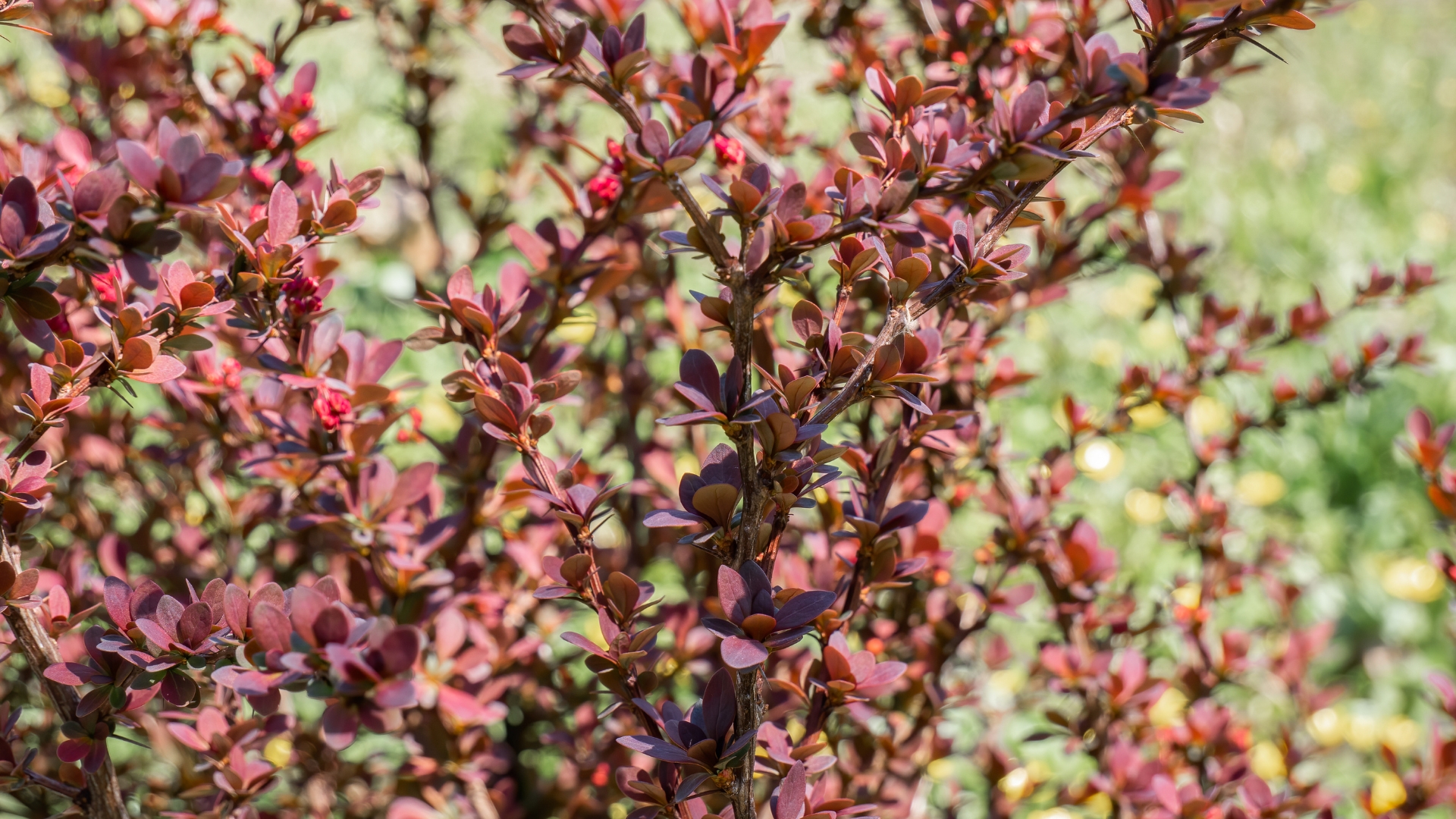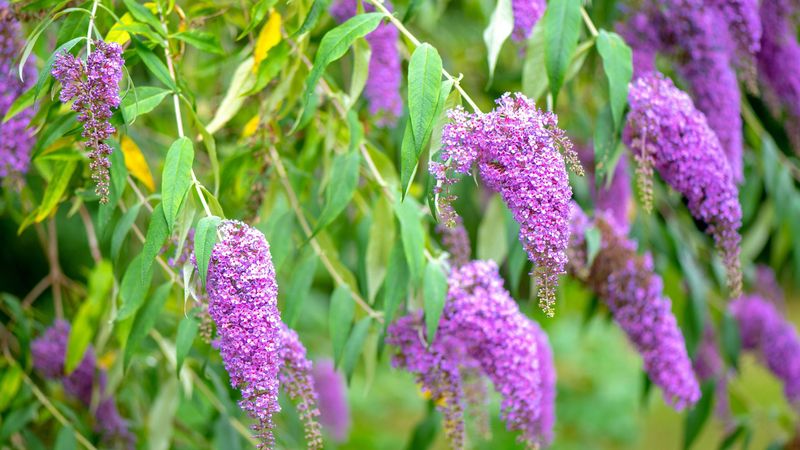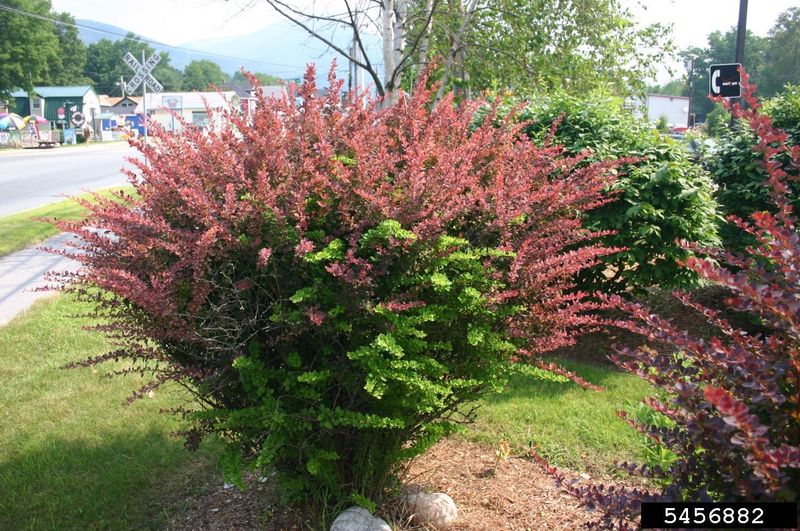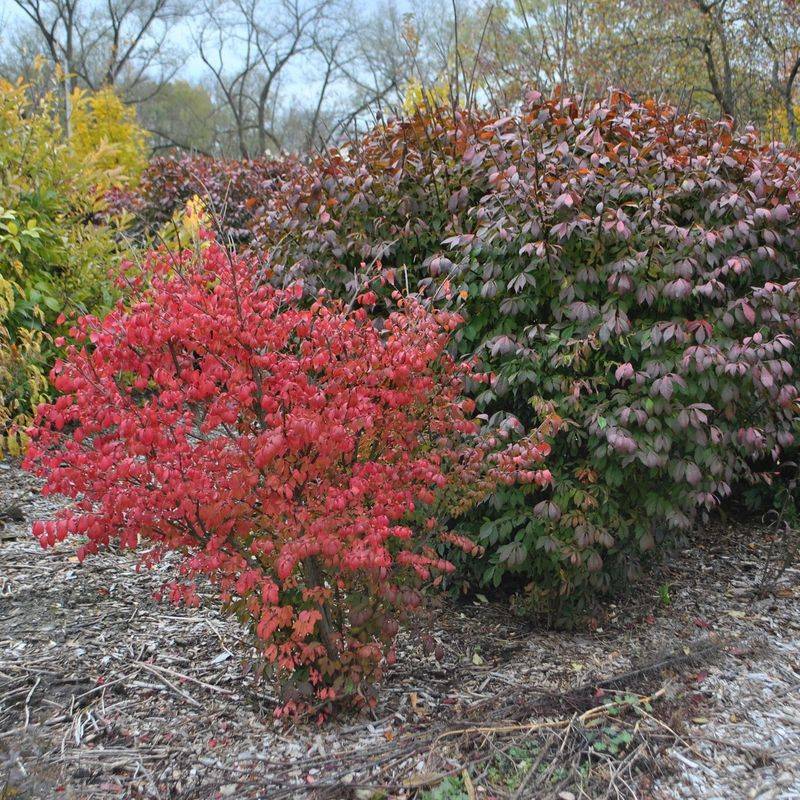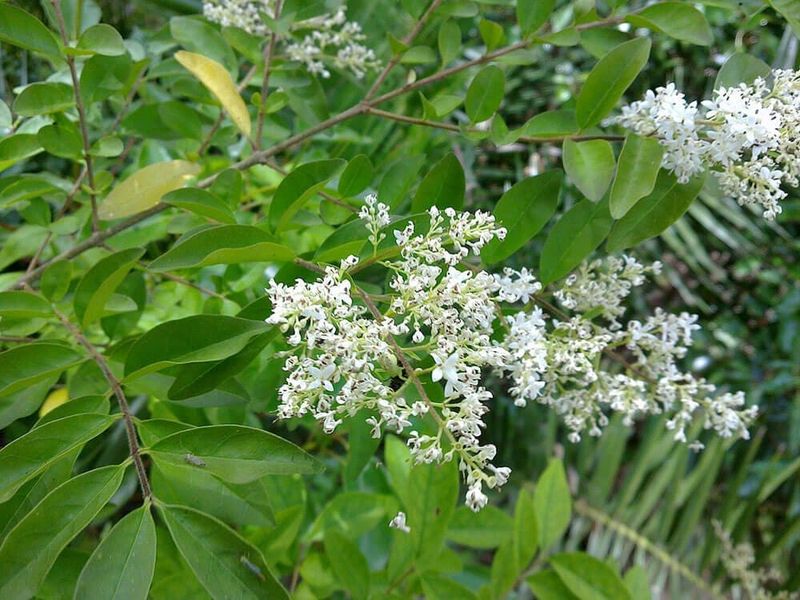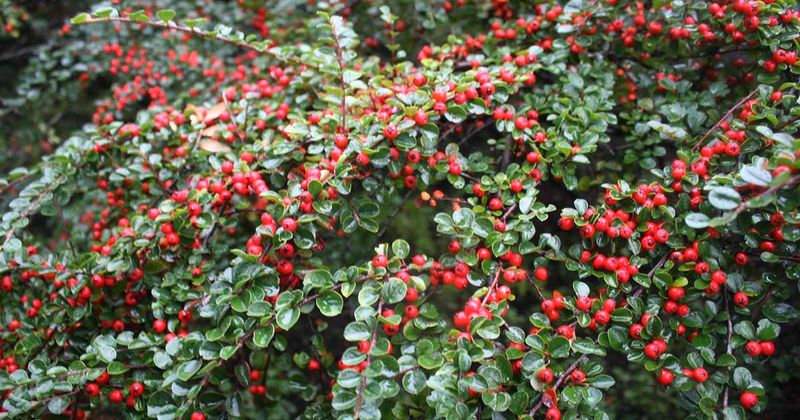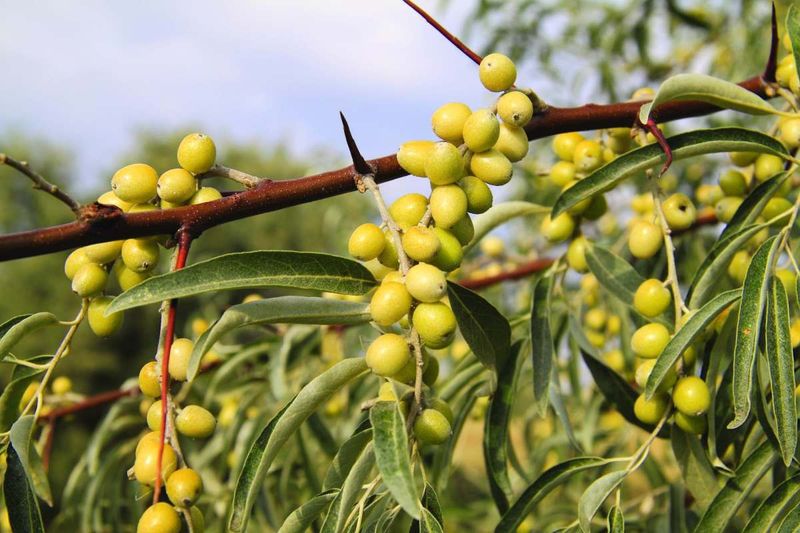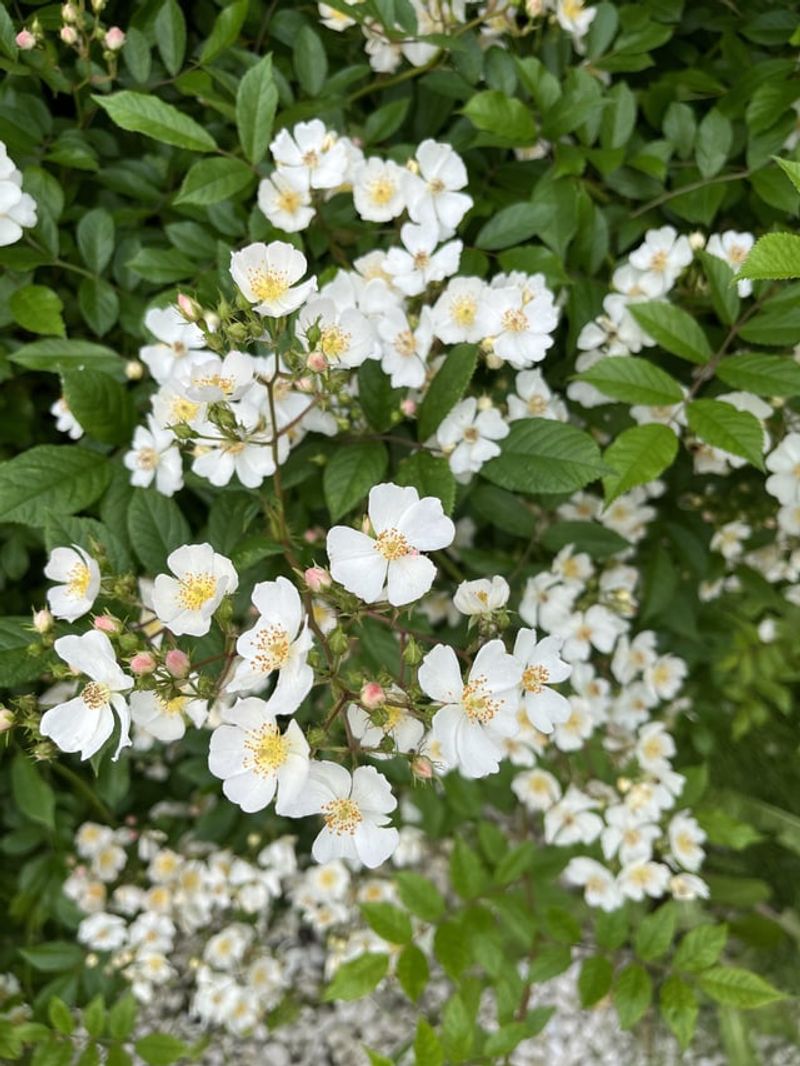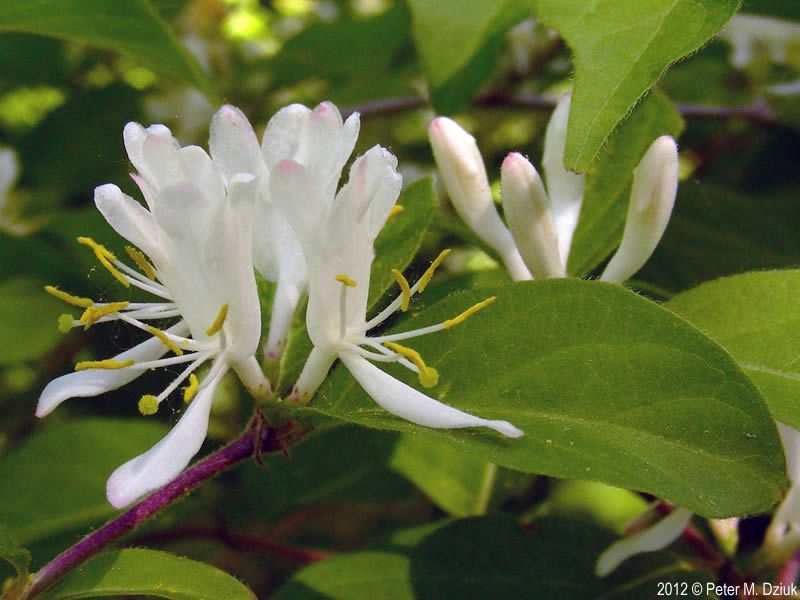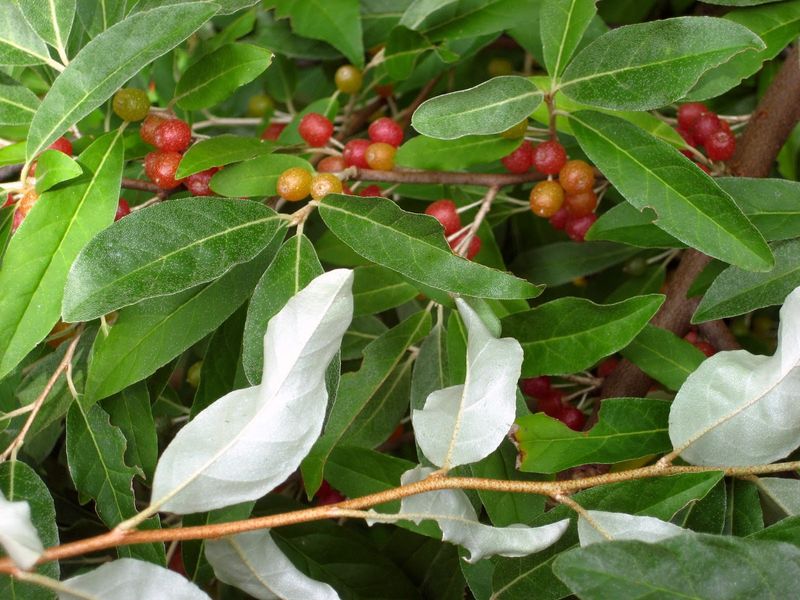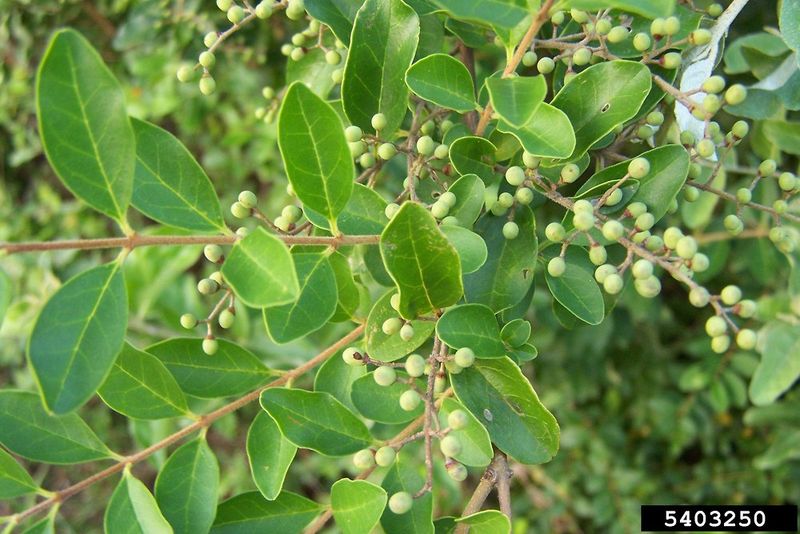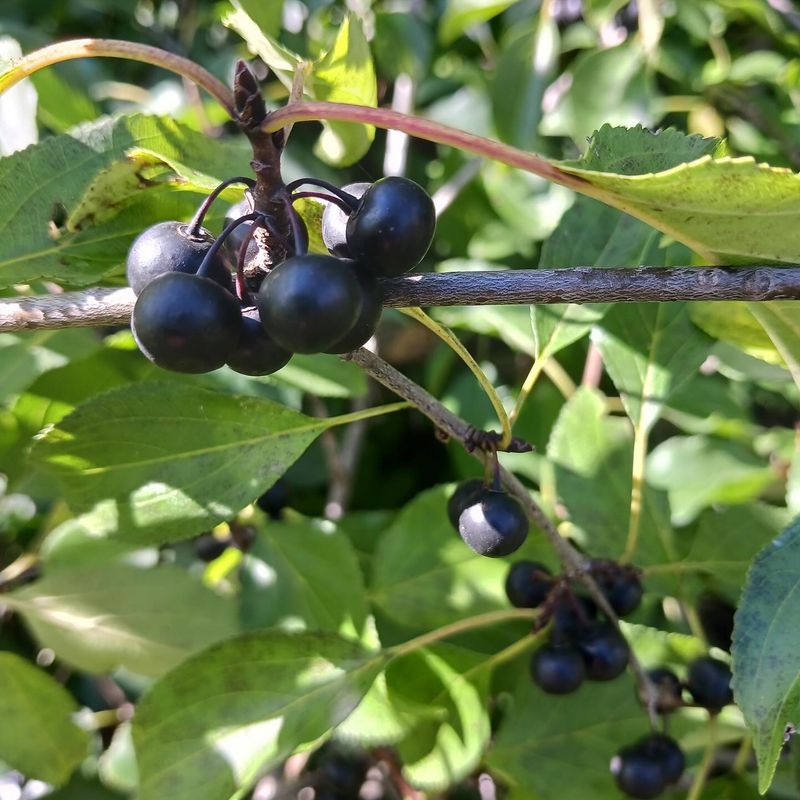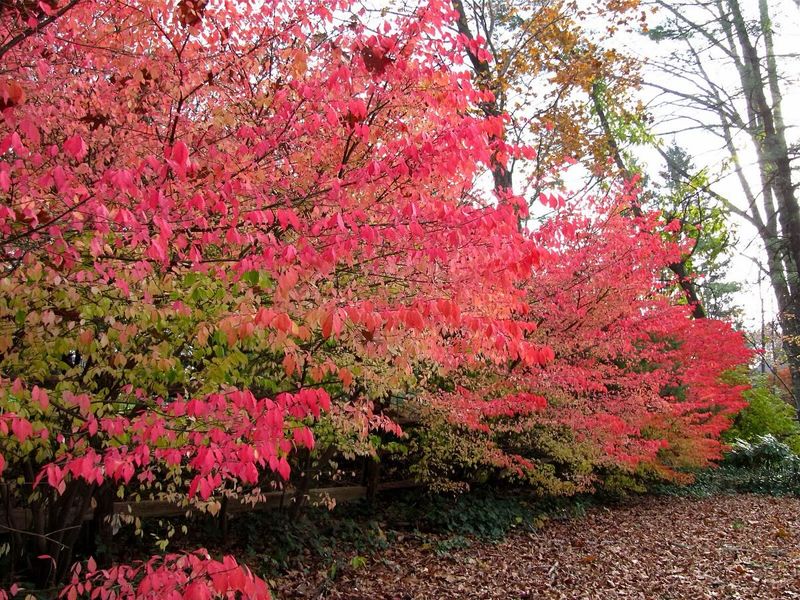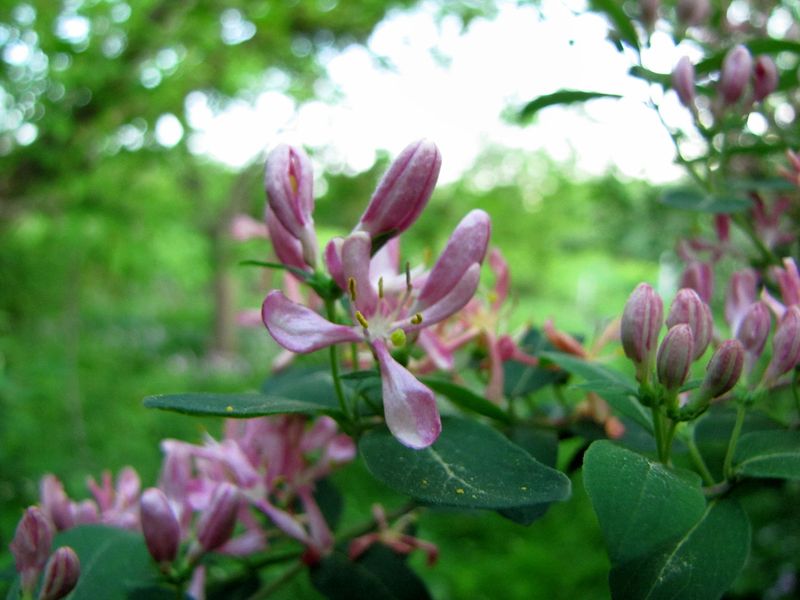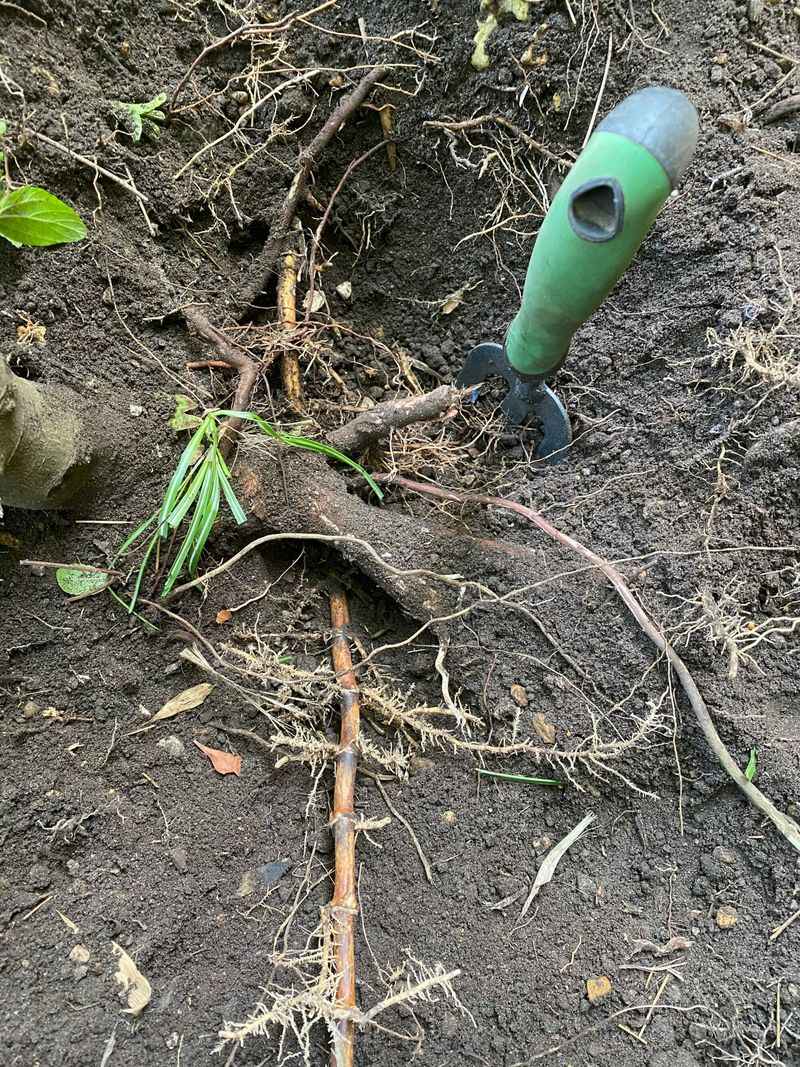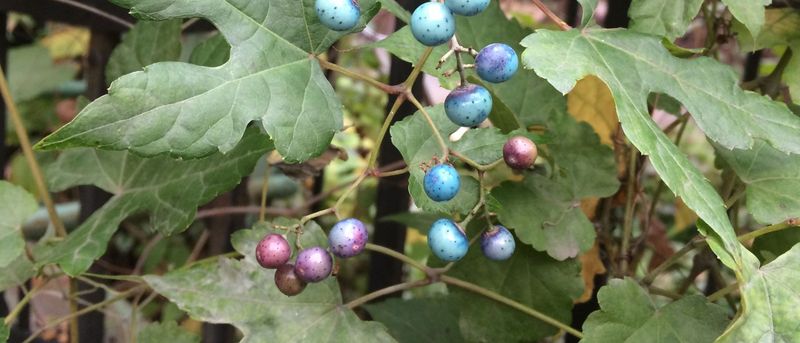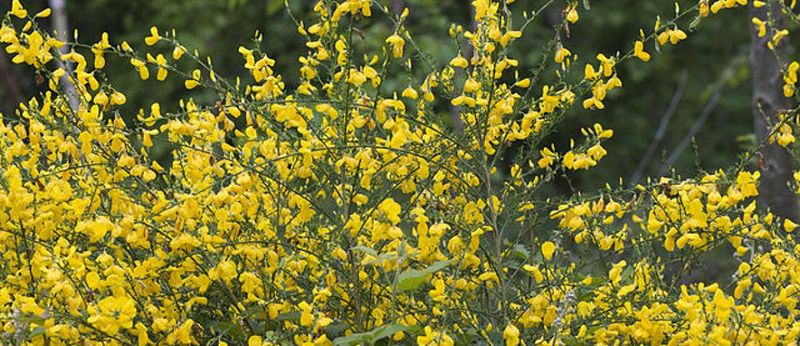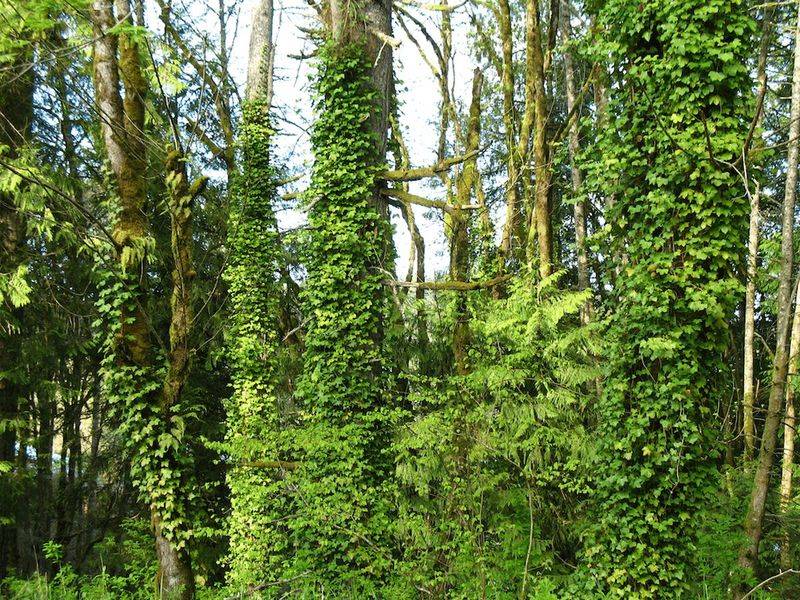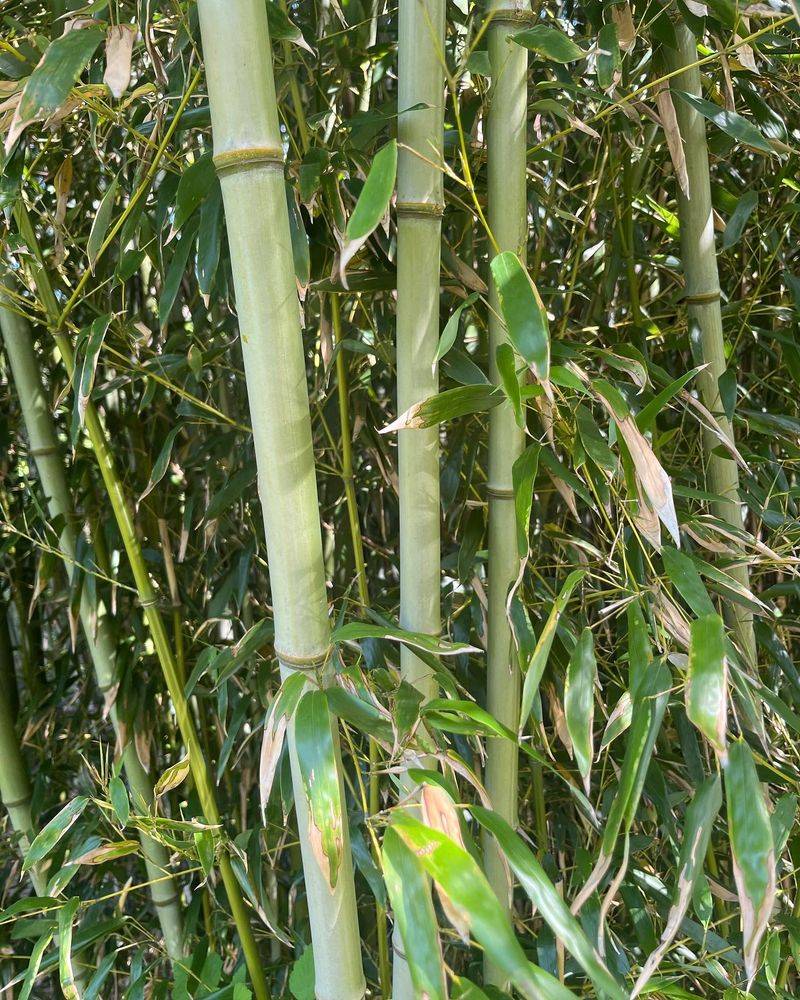Planting beautiful shrubs can transform your garden, but some varieties have a dark side. They grow too fast, spread too far, and turn from garden gems into green monsters. Knowing which shrubs might cause problems can save you countless hours of maintenance and frustration down the road.
1. Butterfly Bush (Buddleja davidii)
Butterfly Bush may attract beautiful pollinators, but it’s a wolf in sheep’s clothing for your garden borders. The fragrant flowers produce thousands of seeds that germinate everywhere, creating a maintenance nightmare.
Originally from China, this deceptive beauty can grow 10-15 feet tall and just as wide in just a couple of seasons. In some states, it’s even classified as a noxious weed due to its ability to escape gardens and invade natural areas.
To keep it somewhat controlled, cut it back hard in late winter and remove seedheads before they disperse.
2. Japanese Barberry (Berberis thunbergii)
Red foliage and bright berries make Japanese Barberry seem like a lovely addition, until it starts spreading everywhere. Birds eat the berries and distribute seeds far beyond your garden, creating thorny thickets that are painful to remove.
Research has shown this shrub creates perfect hiding spots for ticks that carry Lyme disease, adding health concerns to its list of problems. The dense growth pattern blocks sunlight, preventing native plants from growing underneath.
Many states have banned selling this invasive plant, yet it continues to plague gardens and natural areas alike.
3. Burning Bush (Euonymus alatus)
Fall brings spectacular red foliage to Burning Bush, making it a tempting choice for autumn color. Don’t be fooled by its seasonal beauty – this aggressive grower produces abundant seeds that birds scatter everywhere.
Young seedlings pop up throughout gardens, lawns, and even in nearby natural areas where they outcompete native vegetation. The dense shade created by mature specimens prevents other plants from thriving underneath.
Several states have banned this plant due to its invasive tendencies, yet gardeners still battle with established specimens that refuse to stay contained.
4. Privet (Ligustrum species)
Gardeners often plant Privet for quick privacy hedges without realizing the monster they’re unleashing. A single plant can produce thousands of berries, each containing seeds that birds spread far and wide.
Once established, Privet creates dense thickets that shade out and kill native vegetation. The shallow root system makes it difficult to remove completely, as any root fragment left behind will resprout with vigor.
Those fragrant white flower clusters might seem appealing, but they trigger severe allergic reactions in many people, adding respiratory distress to this plant’s list of problems.
5. Cotoneaster (Cotoneaster horizontalis)
Horizontally spreading branches covered with bright berries make Cotoneaster seem like a perfect ground cover. Unfortunately, those attractive berries contain seeds that birds distribute everywhere, leading to unwanted seedlings popping up throughout your garden and beyond.
The sprawling growth habit quickly overtakes neighboring plants, smothering them under its dense branches. In some regions, it has escaped gardens entirely to invade natural areas, crowding out native vegetation.
Removing established plants requires persistence, as the extensive root system resists complete eradication and will resprout from fragments left behind.
6. Russian Olive (Elaeagnus angustifolia)
Silvery foliage might make Russian Olive appear elegant, but this deceptive beauty quickly transforms into a garden bully. Growing up to 20 feet tall with sharp thorns, it forms impenetrable thickets that are nearly impossible to navigate.
Birds love the olive-like fruits and spread seeds everywhere, creating new invasions far from the original planting. The aggressive root system produces suckers that emerge yards away from the parent plant, surprising gardeners with unwanted new growth.
Banned in many states, Russian Olive depletes soil moisture and nutrients, making it difficult for other plants to survive nearby.
7. Multiflora Rose (Rosa multiflora)
Don’t let the delicate white flowers fool you – Multiflora Rose is a garden nightmare wrapped in thorns. Originally introduced for erosion control and living fences, this aggressive rose quickly escaped cultivation to become one of North America’s worst invasive plants.
Long, arching canes covered with sharp, curved thorns form impenetrable thickets up to 15 feet tall. A single plant can produce up to a million seeds annually that remain viable in soil for up to 20 years.
Birds spread the bright red rose hips far and wide, creating new infestations that crowd out native vegetation and reduce wildlife habitat quality.
8. Amur Honeysuckle (Lonicera maackii)
Fragrant flowers and red berries make Amur Honeysuckle seem like a garden asset, but it’s actually an ecological disaster. This aggressive shrub leafs out earlier than native plants, giving it an unfair advantage in capturing sunlight and nutrients.
Birds eagerly consume the berries, spreading seeds across the landscape and creating new invasions. The dense shade created by established plants prevents tree seedlings and native wildflowers from growing, dramatically reducing forest biodiversity.
Research shows this honeysuckle releases chemicals into the soil that inhibit the growth of competing plants – a dirty trick called allelopathy that further ensures its dominance.
9. Autumn Olive (Elaeagnus umbellata)
Silver-spotted leaves and fragrant spring flowers make Autumn Olive initially appealing, but this wolf in sheep’s clothing quickly reveals its true nature. Birds feast on the abundant red berries, spreading seeds far and wide across the landscape.
Growing up to 20 feet tall and equally wide, this aggressive shrub forms dense thickets that shade out native vegetation. Even more troubling, it fixes nitrogen in the soil, changing the chemistry to favor its own growth while disadvantaging native plants adapted to lower nitrogen levels.
Cutting only stimulates vigorous resprouting, making this invasive particularly difficult to eliminate once established.
10. Chinese Privet (Ligustrum sinense)
Chinese Privet starts as an innocent-looking hedge plant before revealing its invasive superpowers. Small white flowers produce thousands of dark purple berries that birds eagerly consume and distribute across the landscape.
Once established, this evergreen monster forms dense stands that completely shade out native vegetation and prevent forest regeneration. The extensive root system makes complete removal extremely difficult, as even small fragments left behind will resprout with determination.
Studies have linked privet pollen to increased asthma and allergy rates in areas where it’s abundant, adding respiratory distress to its list of unwanted traits.
11. Buckthorn (Rhamnus cathartica)
Buckthorn’s early leafout and late leaf drop give it an unfair advantage over native plants, extending its growing season at both ends. The abundant black berries are eaten by birds, who spread seeds far beyond your garden boundaries.
The dense growth creates shade that prevents tree seedlings and wildflowers from growing, while the roots release chemicals that inhibit the growth of competing plants. Even worse, buckthorn serves as a host for soybean aphids and crown rust fungus that damage crops and other plants.
Cutting only prompts aggressive resprouting unless the stump is treated, making this one of the most persistent garden invaders.
12. Winged Euonymus (Euonymus alatus ‘Compactus’)
The ‘compact’ version of Burning Bush isn’t as innocent as garden centers claim. While slightly smaller than its cousin, this shrub still produces thousands of seeds that birds distribute throughout your garden and beyond.
Distinctive corky ‘wings’ on the stems make it easy to identify when removing unwanted seedlings, which will appear everywhere from lawn edges to flower beds. The dense growth shades out desirable plants and creates maintenance headaches as you battle constant spread.
Fall brings spectacular red foliage that tempts gardeners, but the ecological damage caused by this invasive beauty far outweighs its seasonal color display.
13. Bush Honeysuckle (Lonicera tatarica)
Pink flowers and red berries make Bush Honeysuckle initially attractive, disguising its invasive tendencies. Birds eagerly consume the berries, spreading seeds throughout your garden and into nearby natural areas.
The shrub leafs out earlier than native plants and holds its leaves later in fall, giving it weeks of additional growing time to shade out competition. Research shows that areas dominated by bush honeysuckle have fewer native plant species and reduced tree regeneration.
Even worse, forest floor dwelling birds nesting in honeysuckle suffer higher predation rates than those nesting in native shrubs, creating ecological traps for wildlife.
14. Bamboo (Running varieties)
The elegant appearance of bamboo creates a false sense of security before underground rhizomes launch their surprise attack. Running bamboo varieties can send shoots emerging 20-30 feet away from the original planting, even crossing under driveways and foundations.
New culms (stems) can grow several inches daily during the active growing season, quickly forming impenetrable groves. The extensive underground network makes complete removal nearly impossible without excavating the entire area.
Horror stories abound of bamboo pushing through asphalt driveways, invading neighbors’ yards, and requiring backhoes to remove – all starting from an innocent-looking clump in a garden border.
15. Wisteria (Asian varieties)
Cascading purple flowers make Chinese and Japanese wisteria irresistible, but these woody vines quickly transform into garden thugs. Growing up to 10 feet annually, they climb, twist and strangle trees, shrubs, and structures with woody stems that can reach 10 inches in diameter.
Underground runners emerge as new plants dozens of feet from the original vine, surprising gardeners with unwanted shoots in lawns and flower beds. The weight of mature vines can collapse arbors and pull down gutters and siding from houses.
Seed pods explode when mature, flinging seeds that create new infestations far from the parent plant.
16. Porcelain Berry (Ampelopsis brevipedunculata)
Colorful berries in shades of turquoise, purple, and blue make Porcelain Berry seem like a garden treasure. This vine quickly reveals its true nature by growing up to 15 feet in a single season, climbing and smothering everything in its path.
Birds feast on the attractive berries, spreading seeds throughout gardens and natural areas. The extensive root system makes complete removal challenging, as any fragment left behind will resprout with renewed vigor.
Resembling native grape vines until it produces those distinctive berries, this Asian invader crowds out native species and reduces biodiversity wherever it establishes.
17. Scotch Broom (Cytisus scoparius)
Bright yellow flowers covering Scotch Broom in spring create a deceptively cheerful appearance for this aggressive invader. A single plant produces up to 12,000 seeds that remain viable in soil for over 30 years, creating a persistent seed bank that makes eradication nearly impossible.
The deep taproot allows it to survive drought conditions that kill native plants, while nitrogen-fixing root nodules alter soil chemistry to favor its own growth. Fire actually stimulates seed germination, creating dense thickets after wildfires.
Toxic compounds in the foliage make it unpalatable to wildlife and livestock, reducing habitat quality wherever it spreads.
18. English Ivy (Hedera helix)
English Ivy starts as an innocent-looking ground cover before revealing its true invasive potential. Climbing stems produce a different leaf form and begin flowering and fruiting once they reach sufficient height, producing berries that birds spread throughout the landscape.
As ivy climbs trees, it adds significant weight that increases the risk of falling during storms. The dense growth blocks sunlight from reaching tree bark, creating perfect conditions for rot and disease to develop.
Underground stems root wherever they touch soil, creating a mat so dense that even tree seedlings cannot penetrate it, effectively preventing forest regeneration.
19. Golden Bamboo (Phyllostachys aurea)
Golden-green culms (stems) make this bamboo variety visually appealing, but don’t be deceived by its ornamental qualities. Underground rhizomes can spread more than 15 feet annually, sending up new shoots that emerge through lawns, driveways, and even house foundations.
Growing up to 30 feet tall in ideal conditions, this aggressive grass forms dense stands that completely exclude native vegetation. The extensive underground network makes complete removal without heavy equipment virtually impossible once established.
Stories abound of homeowners spending thousands of dollars to remove bamboo plantings that escaped their intended boundaries and invaded neighboring properties.

